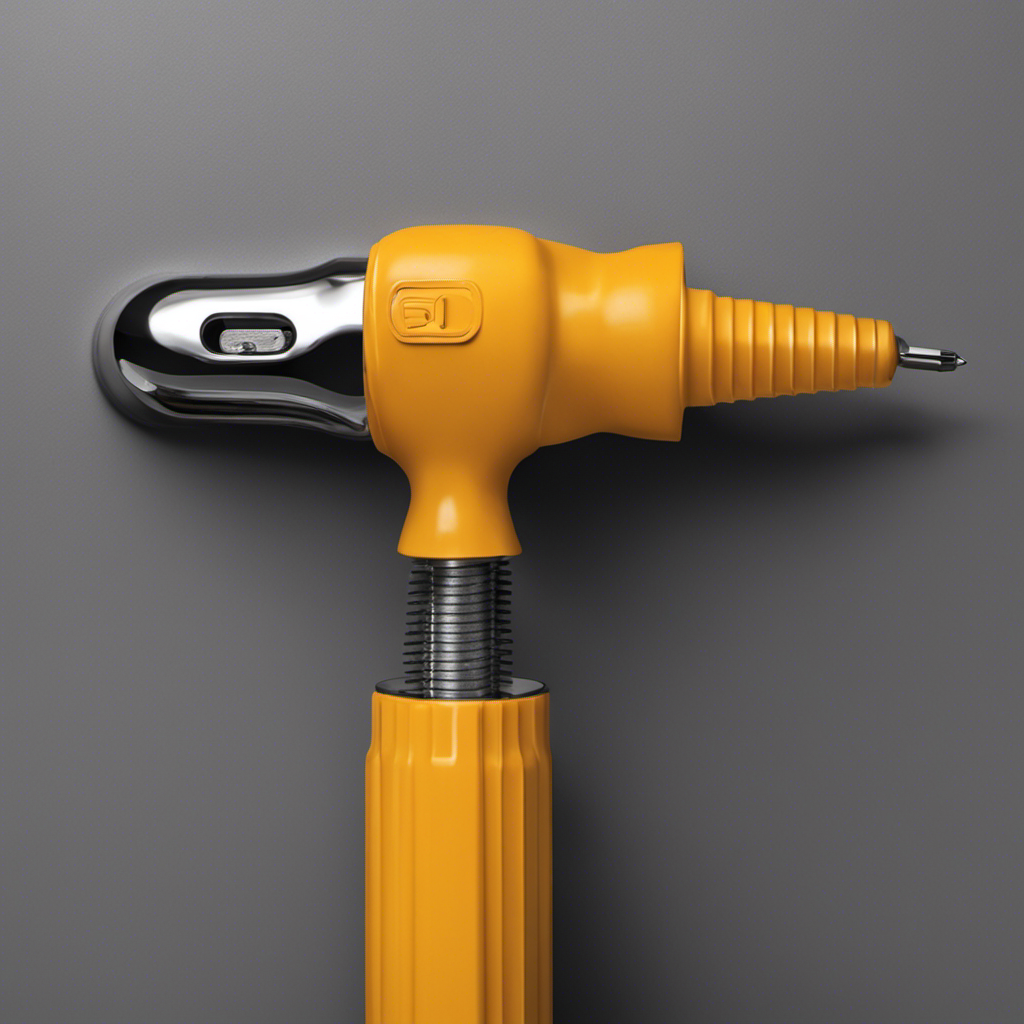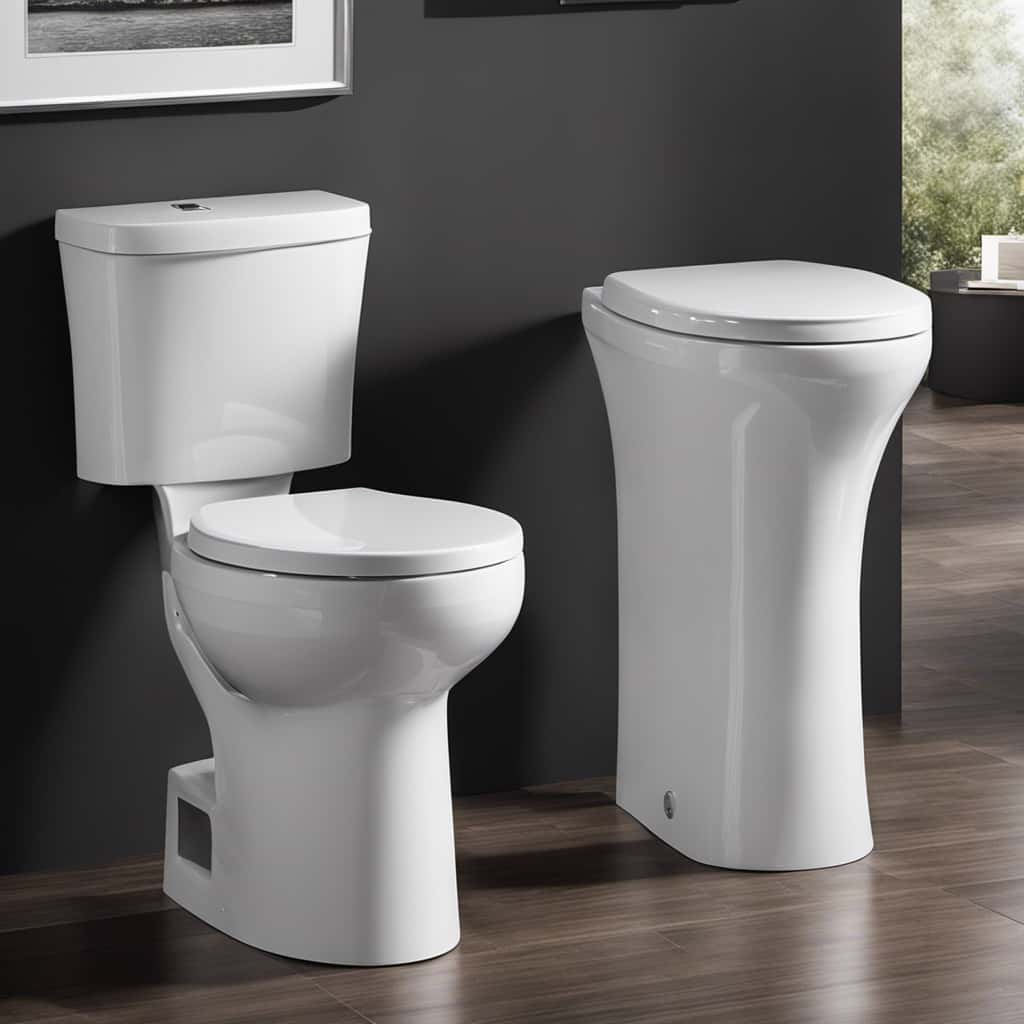Ever pondered over the reason why certain toilets appear to have a feeble flush?
Well, let us take you on a journey through the inner workings of these porcelain thrones.
From clogged pipes to insufficient water levels, from faulty flushing mechanisms to the build-up of mineral deposits, we will explore the technical intricacies behind this common problem.
So buckle up, dear readers, as we delve into the world of toilet mechanics and unveil the secrets behind a lackluster flush.

Key Takeaways
- Clogged pipes and drain pipe issues can cause weak flushes.
- Insufficient water level and water pressure issues can result in weak flushes.
- Malfunctioning flush valves can contribute to weak flushes.
- Build-up of mineral deposits can affect flushing efficiency and cause weak flushes.
Clogged Pipes
Clogged pipes can significantly impact the flushing power of our toilets. When our toilets become clogged, the water flow is hindered, leading to a weak and ineffective flush. The clog can occur due to various reasons, such as excessive toilet paper usage, flushed foreign objects, or a buildup of debris and waste over time.
When the pipes are clogged, the water can’t flow freely, resulting in decreased pressure and reduced flushing efficiency. This can be frustrating and inconvenient, causing multiple flushes and potential backups.
To prevent clogged toilets and maintain optimal water flow, it’s essential to be mindful of what we flush and to take preventive measures such as regular cleaning and maintenance. By doing so, we can ensure a strong and efficient flush every time.
Insufficient Water Level
Sometimes, we may experience a weak flush in our toilets due to an insufficient water level. The water level in the toilet bowl plays a crucial role in achieving a powerful flush. When the water level is too low, it doesn’t provide enough force to effectively remove waste and clean the bowl.
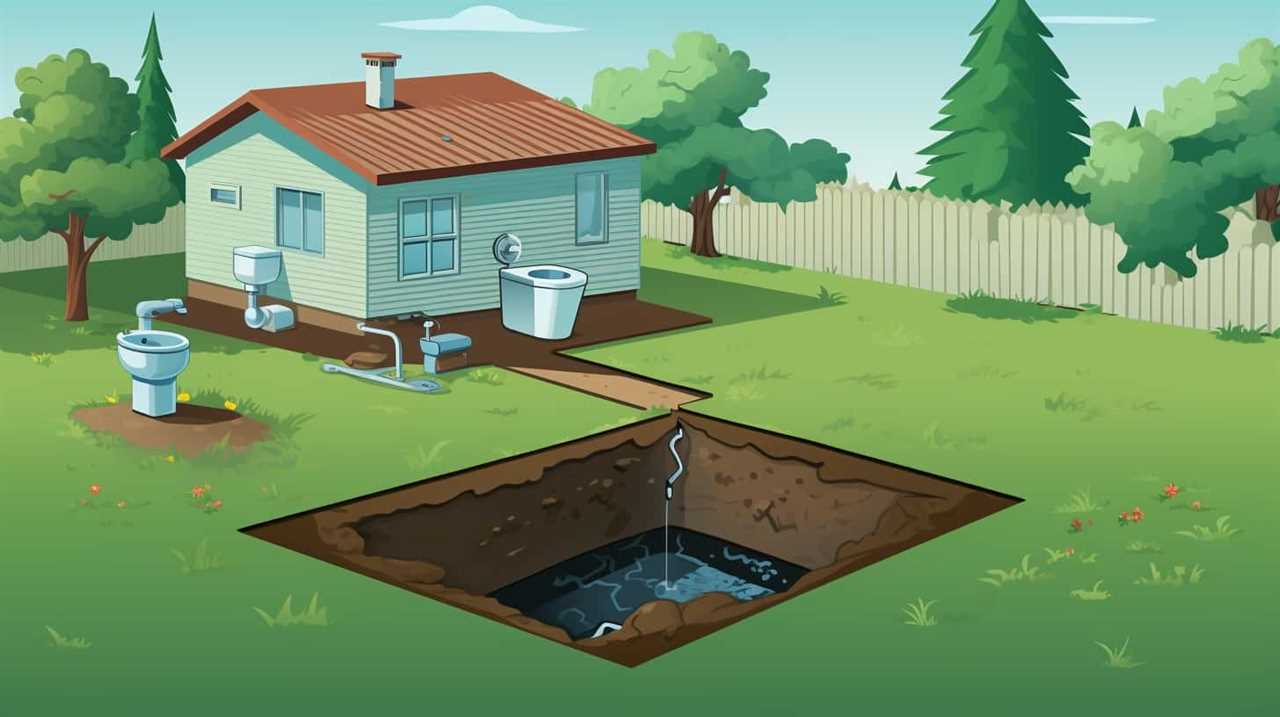
Several factors can contribute to an inadequate water level, such as a faulty fill valve or a clogged inlet valve. To address this issue, it’s essential to check the water supply line, ensure it’s fully open, and examine the float mechanism. Adjusting the float or replacing faulty valves can help maintain the optimal water level in the toilet bowl, resulting in a more efficient flush.
Faulty Flushing Mechanism
When it comes to faulty flushing mechanisms in toilets, there are a few common issues that can cause a weak flush.
One possible problem is water pressure issues, where the water supply isn’t delivering enough pressure to create a strong flush.
Another issue could be a clogged drain pipe, which can restrict the flow of water and prevent a proper flush.
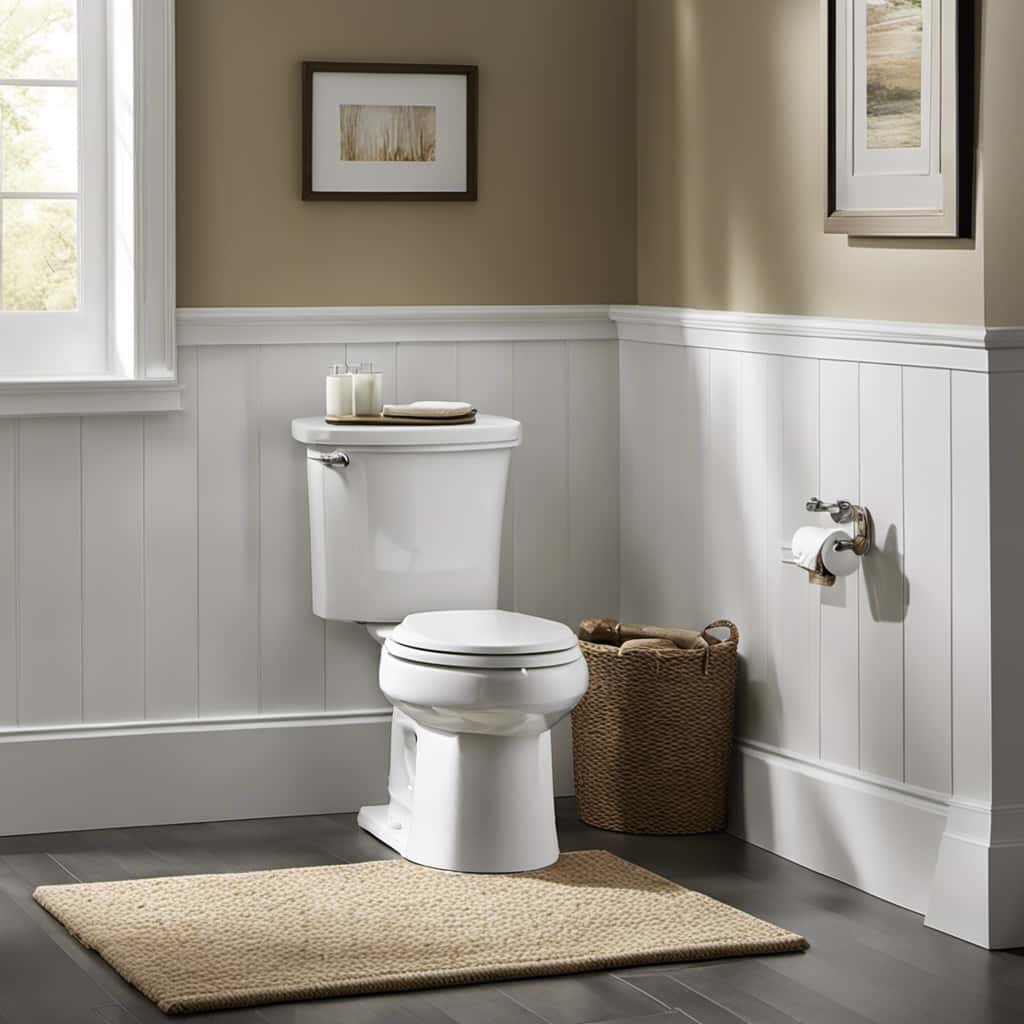
Lastly, a malfunctioning flush valve can also contribute to a weak flush, as it may not open or close properly, affecting the force of the flush.
Water Pressure Issues
To address water pressure issues in toilets with weak flushes, we can start by inspecting the flushing mechanism for any faults. One common cause of weak flushes is a clogged toilet, which can restrict the flow of water and decrease the pressure. However, if the toilet is not clogged, the problem may lie in the water pressure adjustment of the flushing mechanism. The table below provides a breakdown of the potential issues and their corresponding solutions:
| Issue | Solution |
|---|---|
| Faulty flapper | Replace the flapper with a new one |
| Clogged rim holes | Clean the rim holes to remove any blockages |
| Partially closed fill valve | Adjust the fill valve to ensure proper water flow |
| Malfunctioning flush valve | Replace the flush valve to restore proper flushing |
| Insufficient water supply | Check the water supply line for any obstructions or leaks |
Clogged Drain Pipe
Inspecting the flushing mechanism for any faults, we can identify another potential cause of weak flushes: a clogged drain pipe, which can result from a faulty flushing mechanism.
A clogged drain pipe occurs when debris, such as toilet paper or foreign objects, obstructs the flow of water through the pipe. This obstruction prevents the water from flowing quickly and effectively, resulting in a weak flush.
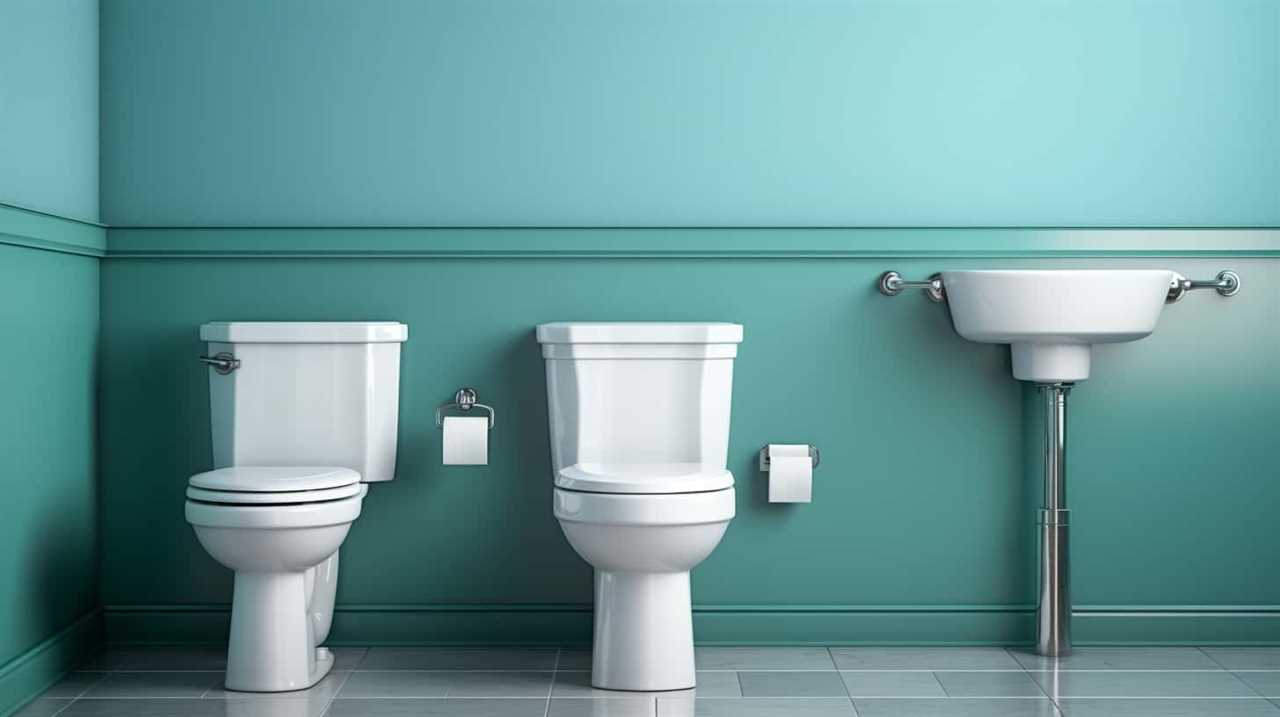
Additionally, an improper drain pipe angle can contribute to clogs by causing water to flow more slowly or even pool in certain areas. This can lead to a buildup of debris and ultimately result in a clogged drain pipe.
To prevent this issue, it’s important to regularly inspect and maintain the flushing mechanism and ensure that the drain pipe has the correct angle for efficient water flow.
Malfunctioning Flush Valve
One possible cause of weak flushes in toilets is a malfunctioning flush valve. The flush valve is responsible for releasing water from the tank into the bowl to create a powerful flush. When the flush valve is faulty, it can result in a weak flush or incomplete flushing.
Here are three reasons why a malfunctioning flush valve may be causing weak flushes:
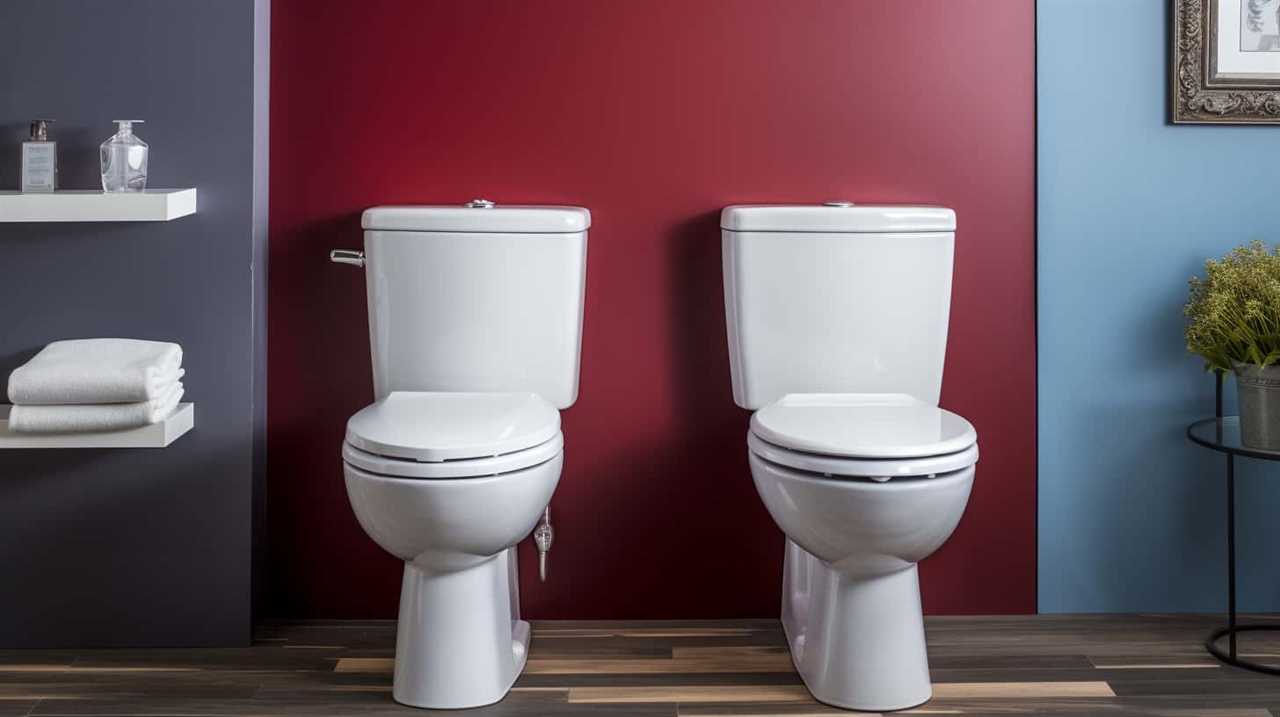
- Worn-out Flapper Valve: Over time, the flapper valve can deteriorate or become misaligned, preventing it from creating a proper seal. This can cause water to leak from the tank into the bowl, reducing the amount available for a strong flush. Replacing the flapper valve can restore the proper functionality of the flush valve.
- Build-up in the Toilet Tank: Sediment, mineral deposits, or debris can accumulate in the toilet tank over time, affecting the flush valve’s performance. Regular cleaning of the tank can help prevent clogs and ensure the flush valve operates efficiently.
- Incorrect Flush Valve Size: Using the wrong size of flush valve can impede the flow of water, resulting in a weak flush. It’s essential to choose the correct flush valve size during installation or consider a flapper valve replacement if the existing one isn’t suitable.
Build-Up of Mineral Deposits
We often encounter weak flushes in toilets due to the build-up of mineral deposits. When water flows through the pipes and into the toilet tank, it carries minerals like calcium and magnesium. Over time, these minerals can accumulate and form deposits on the inner surfaces of the toilet, including the flush valve. This mineral build-up restricts the flow of water, resulting in a weak flush. To better understand the impact of mineral deposits on water flow, consider the following table:
| Mineral Build-Up Level | Water Flow Reduction |
|---|---|
| Low | Minor reduction |
| Medium | Moderate reduction |
| High | Significant reduction |
As the mineral build-up level increases, the water flow reduction becomes more severe. To prevent weak flushes caused by mineral deposits, regular cleaning and maintenance are essential. Flushing the toilet with vinegar or using specialized cleaning agents can help dissolve these mineral deposits and restore optimal water flow.
Low Water Pressure
To understand why some toilets have a weak flush, it’s important to consider the role of low water pressure. Low water pressure can significantly affect the performance of a toilet’s flush. Here are three key factors to consider when troubleshooting a weak flush due to low water pressure:
- Insufficient supply: Check if there’s an adequate water supply to the toilet. Ensure that the shut-off valve is fully open and not partially closed, restricting the water flow.
- Clogged pipes: Blockages or obstructions in the water pipes can reduce water pressure. Inspect the pipes for any debris, mineral deposits, or other obstructions that may be causing a restriction in the flow.
- Pressure regulator: A faulty or incorrectly adjusted pressure regulator can result in low water pressure throughout the plumbing system. Consult a professional plumber to inspect and adjust the pressure regulator if necessary.
Incorrect Toilet Installation
When it comes to toilet installation, there are several potential issues that can contribute to a weak flush.

One common problem is an improper drain pipe angle, which can impede the flow of waste and water.
Another culprit could be a faulty flapper valve, which controls the release of water from the tank to the bowl.
Additionally, an inadequate water supply can also lead to a weak flush.
It’s important to address these installation errors to ensure a properly functioning toilet.
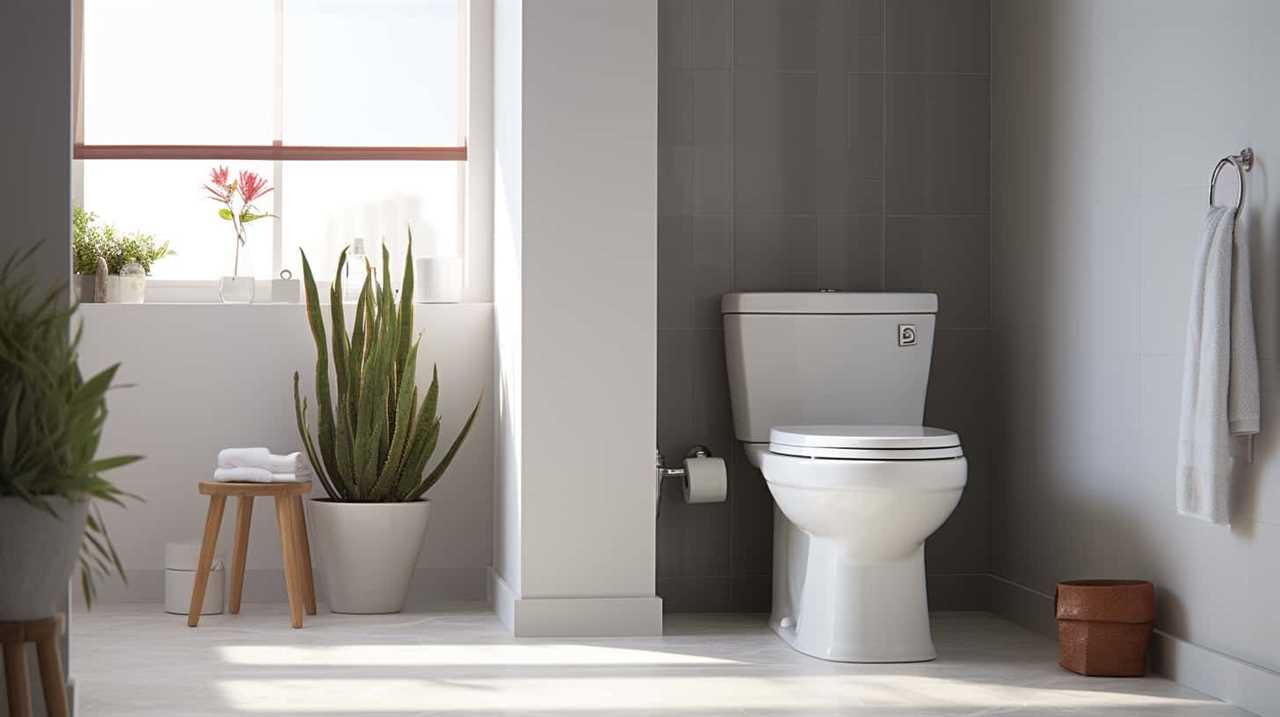
Improper Drain Pipe Angle
A common cause of weak flushes in toilets is improper drain pipe angle during installation. When the drain pipe isn’t properly angled, it can hinder the flow of water and waste through the pipes, resulting in a weak flush.
Here are three reasons why an improper drain pipe angle can lead to a weak flush:
- Improper toilet design: Some toilets are designed with a specific drain pipe angle in mind. If the toilet isn’t installed at the correct angle, it can disrupt the flushing mechanism and reduce the effectiveness of the flush.
- Inadequate water supply: A proper drain pipe angle is crucial for ensuring that an adequate amount of water is delivered to the toilet bowl during each flush. If the angle is incorrect, it can restrict the water flow and result in a weak flush.
- Blockages and clogs: An improper drain pipe angle can also contribute to blockages and clogs in the toilet drain. When the angle isn’t optimal, waste and debris can accumulate in the pipes, further obstructing the flow of water and affecting the flush.
Understanding the importance of a correct drain pipe angle is essential for ensuring optimal toilet performance and preventing weak flushes. However, an improper drain pipe angle isn’t the only potential cause of weak flushes. Another common culprit is a faulty flapper valve, which we’ll discuss in the next section.
Faulty Flapper Valve
Our experience has shown that a faulty flapper valve is a common cause of weak flushes in toilets due to incorrect toilet installation.
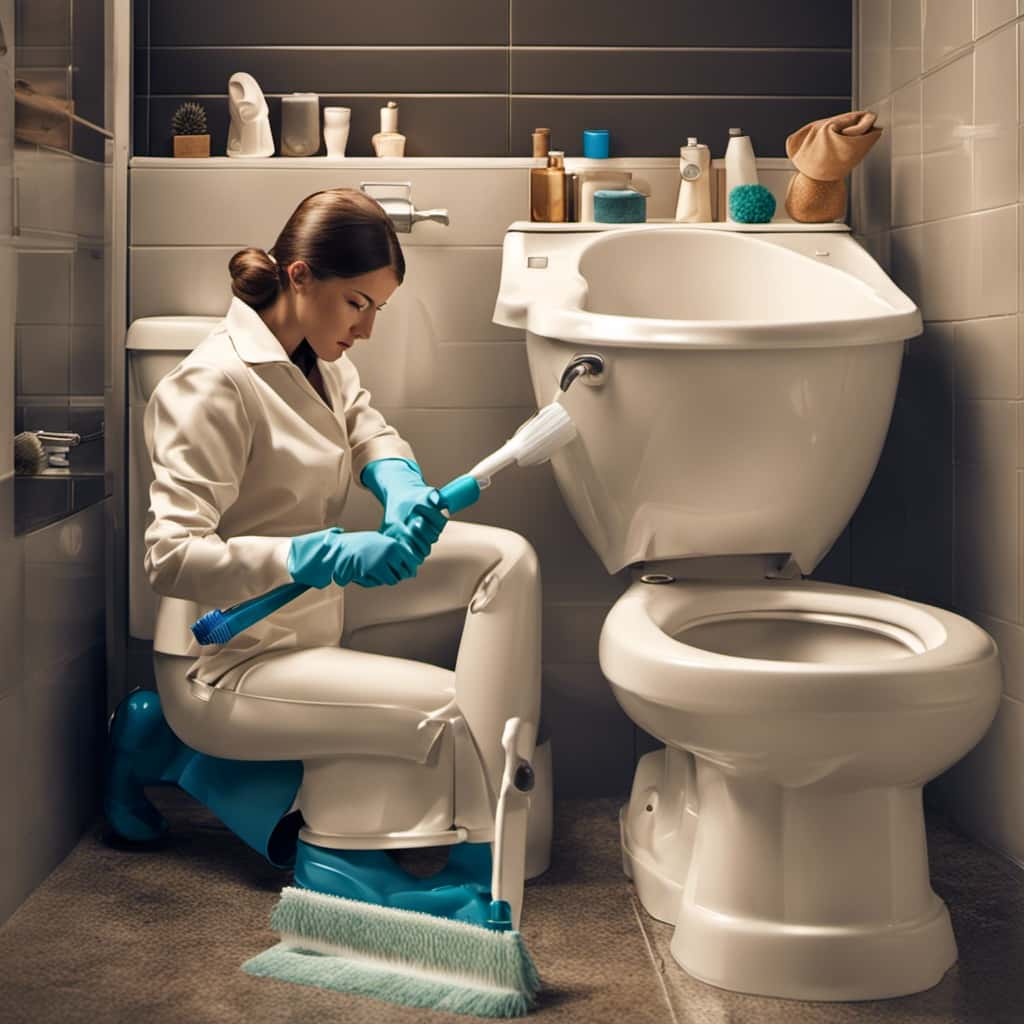
The flapper valve is a crucial component responsible for controlling the flow of water from the tank into the bowl during a flush. When the flapper valve is faulty, it may not seal properly, resulting in a weak flush or incomplete flushing.
This improper sealing allows water to leak from the tank into the bowl, reducing the pressure and volume of water available for the flush.
To rectify this issue, a flapper replacement is necessary. By replacing the faulty flapper valve with a new one, the toilet will be able to achieve a proper seal, ensuring a strong and efficient flush.
Inadequate Water Supply
Although it’s often overlooked, one common reason for a weak flush in toilets is an inadequate water supply due to incorrect toilet installation. When the water pressure is insufficient, it can hinder the flushing power of the toilet, resulting in a weak or incomplete flush. Here are three factors that can contribute to inadequate water pressure and faulty water supply:

- Pipe diameter: If the diameter of the water supply pipe is too small, it can restrict the flow of water to the toilet, leading to low water pressure and a weak flush.
- Valve obstruction: Accumulation of debris or sediment in the shut-off valve or supply line can partially block the water flow, reducing water pressure and affecting the flush performance.
- Improper water line connection: Incorrectly connecting the toilet’s water line to the main supply line can cause water pressure issues. For example, using a small or mismatched connector can restrict water flow and result in a weak flush.
Understanding the importance of proper installation and addressing these issues can help ensure an adequate water supply and improve the flushing efficiency of the toilet.
However, inadequate water supply isn’t the only culprit behind a weak flush; another common cause is a faulty flapper valve.
Faulty Flapper Valve
We often encounter weak flushes in toilets due to issues with the flapper valve. The flapper valve is a crucial component responsible for controlling the flow of water from the tank into the bowl during a flush.
Over time, the flapper valve can become worn, cracked, or misaligned, resulting in a weak flush. To resolve this issue, flapper valve replacement or maintenance may be necessary.
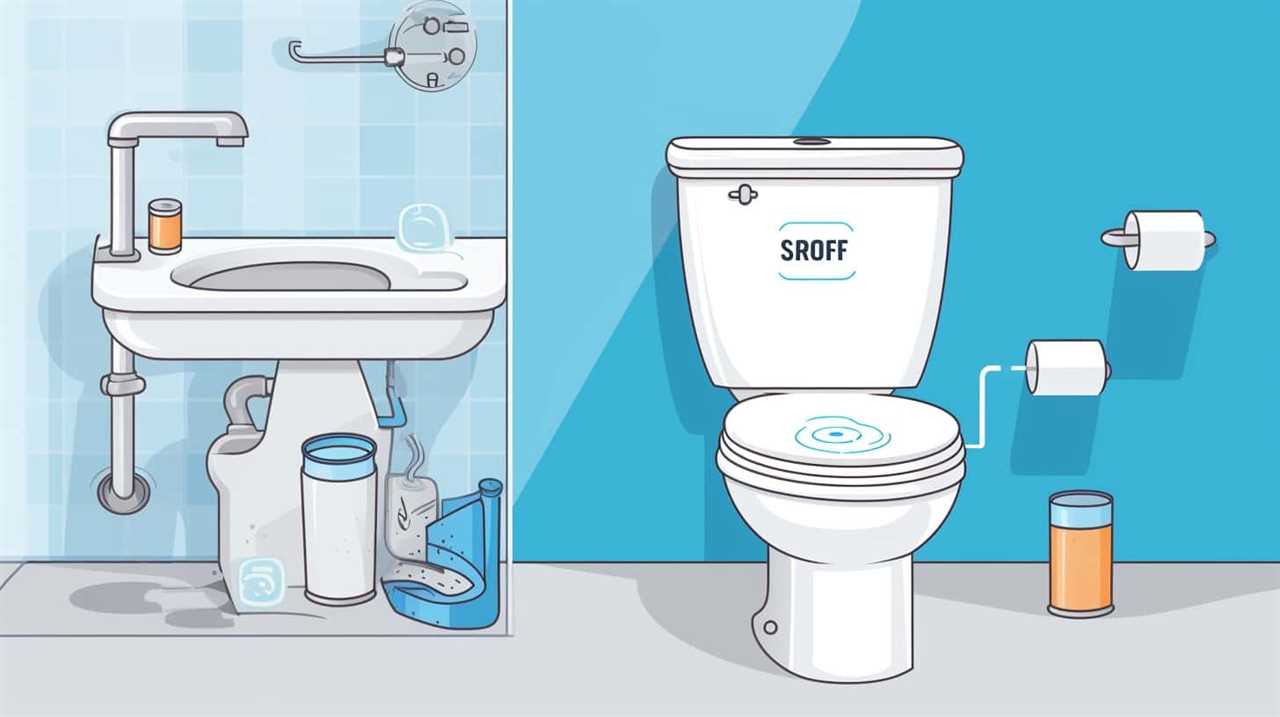
Regularly inspecting the flapper valve for signs of damage or wear, such as leaks or a loose fit, is essential. If any issues are detected, replacing the flapper valve with a new one can restore the proper functioning of the toilet and ensure a strong flush.
Proper flapper valve maintenance is crucial for maintaining an efficient flushing system in toilets.
Blocked Vent Pipe
To continue addressing the issue of weak flushes in toilets, another possible culprit is a blocked vent pipe. The vent pipe in a plumbing system plays a crucial role in maintaining proper airflow and pressure within the system. When it becomes blocked, several problems can occur, leading to a weak flush.
Here are three key reasons why a blocked vent pipe can cause plumbing problems:
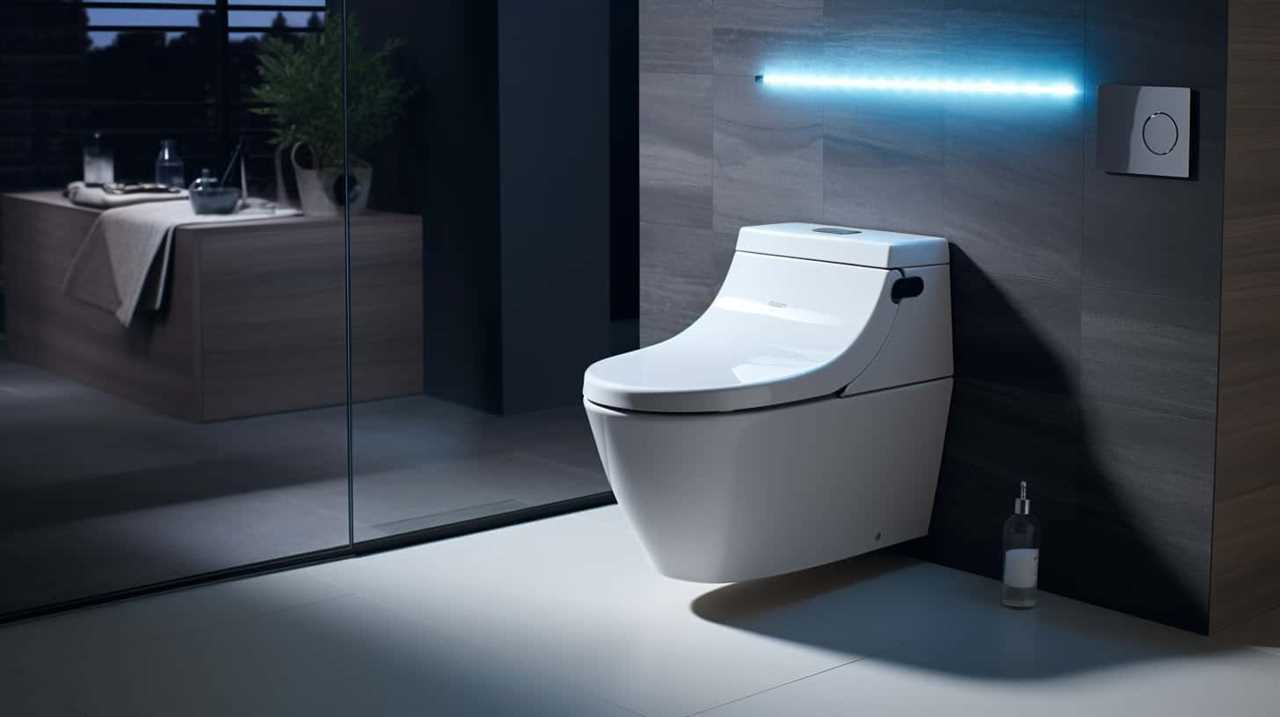
- Airflow restriction: A blocked vent pipe prevents the free flow of air, which is essential for creating the necessary pressure to flush waste effectively. Without proper airflow, the flushing mechanism becomes compromised, resulting in a weak flush.
- Negative pressure: When a vent pipe is blocked, it can create negative pressure in the plumbing system. This negative pressure can cause water to be siphoned out of the toilet bowl instead of being flushed down, further contributing to a weak flush.
- Increased resistance: A blocked vent pipe increases resistance within the plumbing system. This resistance hinders the flow of water, reducing the force behind the flush and resulting in a weak or incomplete evacuation of waste.
Addressing a blocked vent pipe requires professional assistance to identify and clear the blockage. By resolving this issue, the toilet’s flush performance can be restored to optimal levels.
Aging or Worn-Out Toilet Parts
Another factor that can contribute to a weak flush in toilets is the deterioration or wearing out of various toilet parts. Over time, aging toilet parts and worn-out components can affect the performance of the flush mechanism, leading to reduced flushing power.
One common issue is the deterioration of the flapper valve. The flapper valve is responsible for sealing the water tank and allowing the water to flow into the toilet bowl during a flush. If the flapper valve becomes worn out or damaged, it may not seal properly, resulting in water leakage and a weak flush.
Additionally, aging fill valves or flush valves can lead to reduced water flow, further contributing to a weak flush. Regular maintenance and replacement of these aging toilet parts are essential to ensure optimal flushing performance.

Inadequate Toilet Design
One possible reason for a weak flush in some toilets is a subpar toilet design. When the toilet bowl design is inadequate, it can greatly impact flushing efficiency. Here are three key factors that can contribute to an inefficient flush:
- Bowl Shape: The shape and contour of the toilet bowl can affect the flow of water during a flush. If the bowl has a shallow or irregular shape, it may not create enough force to effectively remove waste.
- Trapway Size: The trapway is the passage that connects the bowl to the drainpipe. If the trapway is too narrow or has rough edges, it can impede the flow of water, causing a weak flush.
- Rim Holes: The rim holes, located under the toilet bowl rim, play a crucial role in creating a powerful flush. If these holes are clogged or poorly positioned, they can hinder the proper distribution of water, resulting in a weak flush.
To address these issues, it’s important to choose a toilet with a well-designed bowl that promotes flushing efficiency.
Improper Toilet Maintenance
When it comes to weak flushes, one of the main culprits is often a clogged pipe. Over time, debris and waste can accumulate in the pipes, obstructing the flow of water and reducing the flushing power.
Additionally, a faulty flushing mechanism can also contribute to a weak flush. Issues such as a worn-out flapper or a malfunctioning fill valve can prevent the toilet from properly emptying and refilling, resulting in a weak flush.
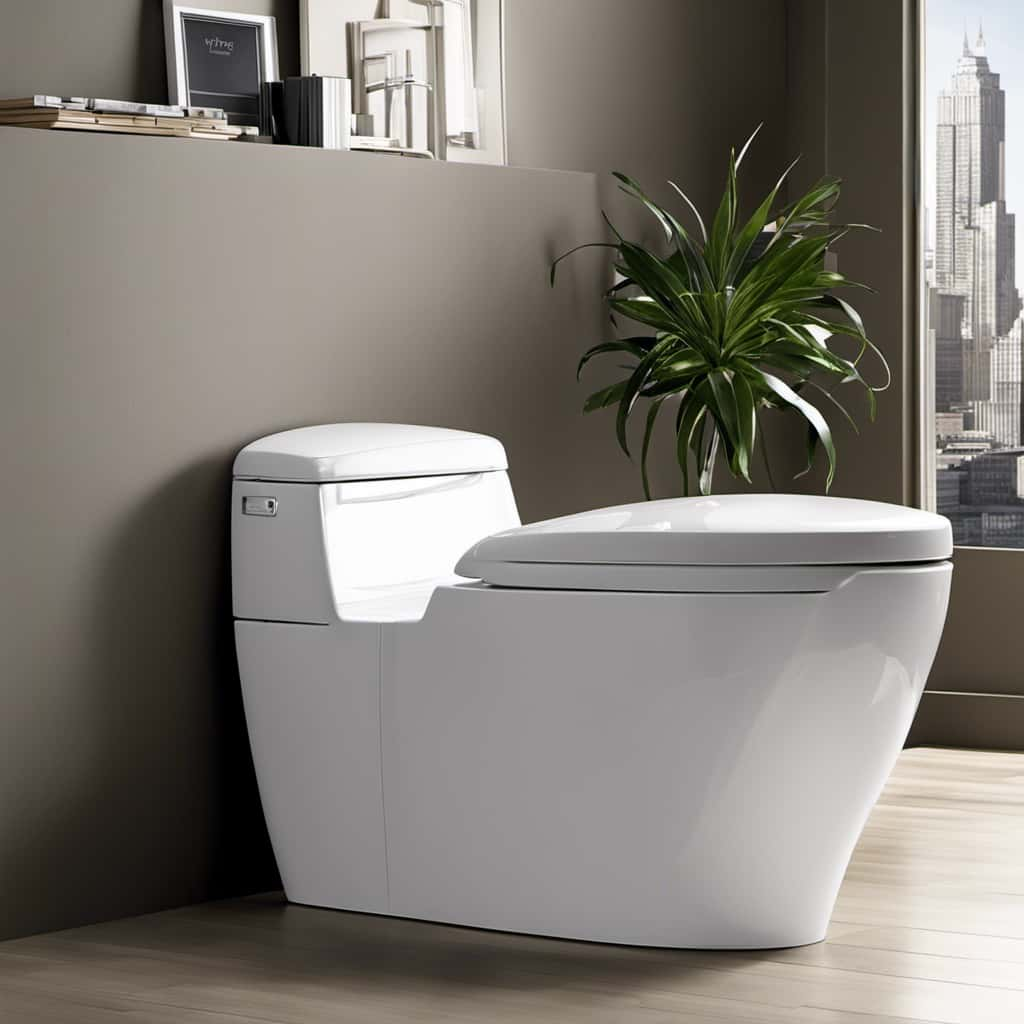
Clogged Pipe Causing Weak Flush
Toilets may experience a weak flush due to a clogged pipe caused by improper toilet maintenance. When a clogged drain occurs, it can lead to a toilet blockage, resulting in a weak flush.
Here are three reasons why a clogged pipe can cause a weak flush:
- Build-up of debris: Over time, debris such as toilet paper, hair, or foreign objects can accumulate in the pipes, obstructing the flow of water. This build-up restricts the water flow, leading to a weak flush.
- Mineral deposits: Hard water contains minerals that can accumulate and form deposits in the pipes. These mineral deposits can reduce the diameter of the pipe, causing water to flow slower and resulting in a weak flush.
- Grease and fat accumulation: Improper disposal of grease and fat down the toilet can cause them to solidify in the pipes. This solidified grease and fat can stick to the pipe walls, narrowing the passageway and impeding the flow of water, leading to a weak flush.
Regular toilet maintenance, including proper disposal of waste and periodic cleaning of the pipes, can help prevent clogs and ensure a strong flush.
Faulty Flushing Mechanism
Now let’s delve into the issue of improper toilet maintenance and how it can lead to a faulty flushing mechanism.

One common problem that can arise from improper toilet maintenance is a faulty handle mechanism, which can result in a weak water flow during flushing. The handle mechanism is responsible for initiating the flushing process by activating the flushing mechanism inside the toilet tank.
If the handle mechanism isn’t functioning properly, it may not provide enough force to effectively flush the toilet. This can lead to a weak water flow, causing waste to remain in the bowl or not be fully cleared away. Therefore, it’s crucial to regularly inspect and maintain the handle mechanism to ensure optimal flushing performance.
Moving forward, let’s discuss the subsequent section about plumbing issues in the sewage system.
Plumbing Issues in the Sewage System
Although we’d discussed the weak flush in some toilets, it’s important to address the plumbing issues that can occur in the sewage system. These issues can lead to sewer line blockage and sewage backup, causing significant problems in a household or building.

Here are three common plumbing issues that can affect the sewage system:
- Tree root intrusion: Tree roots can infiltrate sewer lines, causing blockages and restricting the flow of wastewater. This can lead to sewage backup and potential damage to the pipes.
- Accumulation of debris: Over time, debris such as grease, hair, and other foreign objects can accumulate in the sewer lines, obstructing the flow of wastewater. This can result in slow drainage, foul odors, and sewage backup.
- Pipe deterioration: Aging pipes can deteriorate, leading to cracks, corrosion, or collapsed sections. These issues can cause blockages and sewage backup, as well as potential leaks that can damage the surrounding area.
Understanding these plumbing issues in the sewage system is crucial for maintaining proper functioning and preventing costly repairs or damage. Regular inspections and maintenance can help identify and address these problems before they escalate.
Conclusion
In conclusion, weak flushes in toilets can be caused by various factors such as:
- Clogged pipes
- Insufficient water levels
- Faulty flushing mechanisms
- Build-up of mineral deposits
Additionally, other factors that can contribute to weak flushes include:
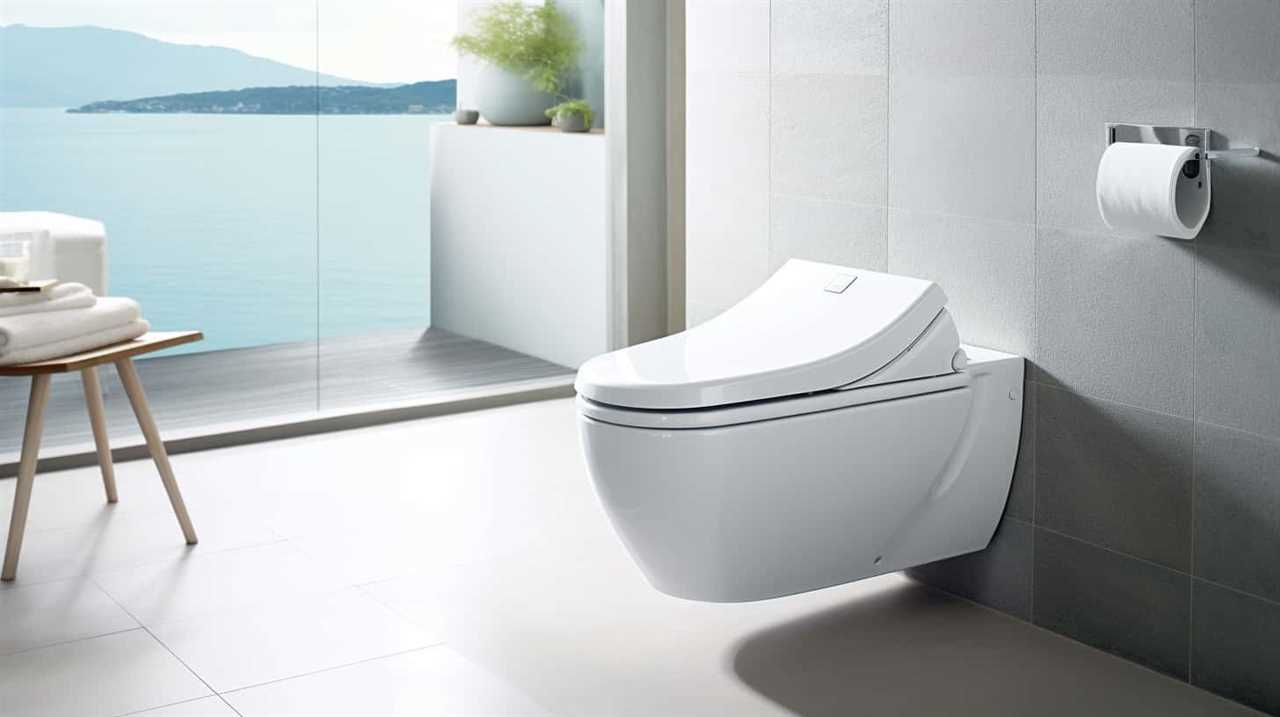
- Low water pressure
- Aging or worn-out toilet parts
- Inadequate toilet design
- Improper maintenance
- Plumbing issues in the sewage system
Interestingly, a study found that approximately 25% of weak flushes are due to mineral deposits, highlighting the importance of regular cleaning and maintenance to ensure optimal toilet performance.



